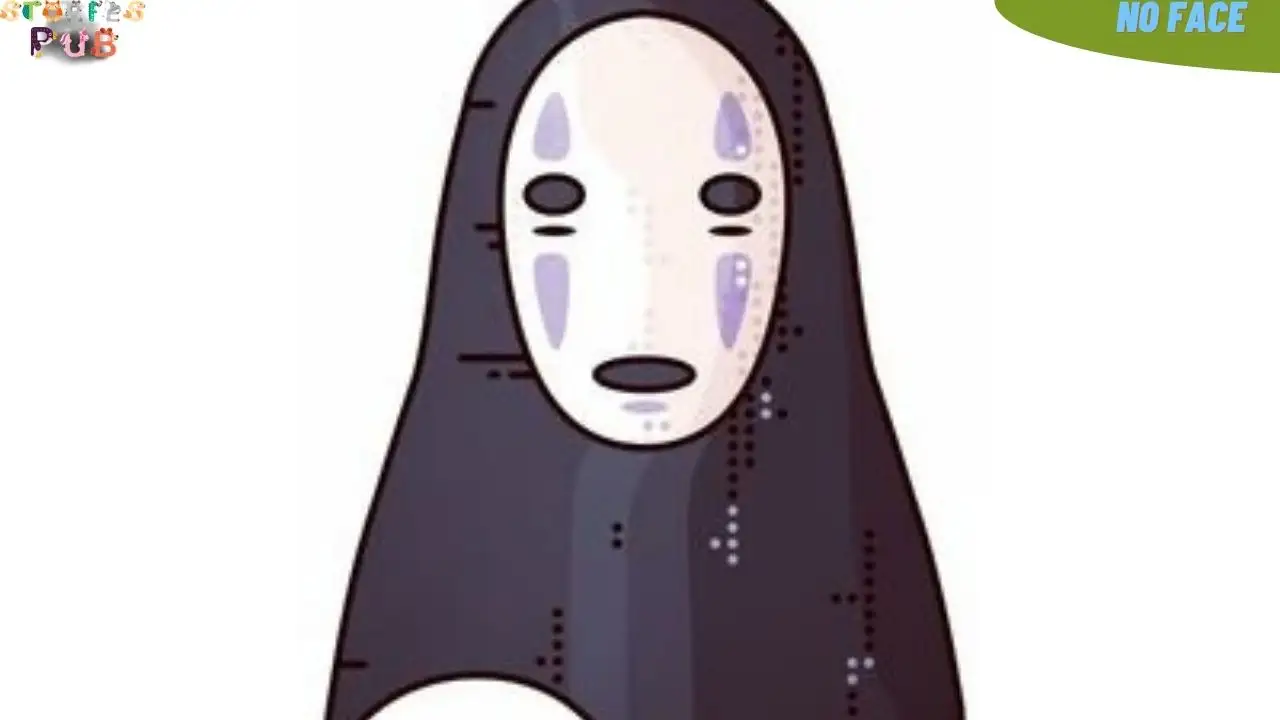No Face: A Cautionary Japanese folklore

“No Face” is a character from the anime and manga film “Spirited Away” by Hayao Miyazaki. The character is shown as a strange and mysterious creature that takes on the shape and personality of whoever it meets.
In the story, No Face is initially depicted as a shapeless entity that appears at a bathhouse for spirits and gods. He has the ability to mimic the appearances and personalities of others, leading him to consume large amounts of food and gain weight. Eventually, he starts to cause trouble and chaos, which makes the staff of the bathhouse afraid of him.
No Face is widely considered to be a representation of temptation and the danger of giving in to our desires and vices. The character’s ability to mimic others and change form represents the fluidity and malleability of identity and the consequences of succumbing to our darker impulses.
Despite its frightening appearance and actions, No Face is also seen as a tragic figure, driven by a hunger for connection and a desire to belong. This makes the character both scary and sad, which adds to its popularity as a well-known and long-lasting figure in Japanese folklore and popular culture.
Overall, No Face is a well-known and memorable character from Japanese folklore that fans of anime, manga, and Japanese culture still know and love.
What does “No Face” mean?
In Hayao Miyazaki’s anime and manga movie “Spirited Away,” “No Face” is a character who shows how dangerous it is to give in to our desires and vices.
The character is shown to be a shapeless being that can take on the looks and personalities of others. This lets it eat a lot of food and cause trouble for the people who live in a bathhouse for spirits and gods.
Its ability to mimic others and change form represents the fluidity and malleability of identity and the consequences of succumbing to our darker impulses. Despite its frightening appearance and actions, No Face is also seen as a tragic figure, driven by a hunger for connection and a desire to belong.
In this way, No Face can be seen as a cautionary tale about how dangerous it is to give in to our most base desires and how important it is to stay in charge of our actions and motivations.
Why is No Face nice to Chihiro?
In “Spirited Away,” No Face is initially drawn to Chihiro, the film’s main character, because of her kindness and selflessness. Even though Chihiro is scared of the strange and supernatural world she finds herself in, she stays kind and tries to help others, even if it costs her a lot.
No Face is drawn to these qualities and seeks to imitate them in order to fit in and be accepted by the other spirits and gods at the bathhouse. He is initially nice to Chihiro because he sees her as a model of the kind of person he wants to be.
However, as No Face continues to consume more and more food and gain weight, he becomes more and more consumed by his own desires and loses control of his own actions. This makes him more and more violent and dangerous, putting Chihiro and other people in danger.
Despite this, Chihiro remains steadfast in her belief in No Face’s inherent goodness and continues to try to help him, ultimately leading him to see the error of his ways and return to his true form. In this way, Chihiro’s kindness and compassion play a crucial role in No Face’s development and redemption.
Why does No Face turn evil?
In “Spirited Away,” No Face’s transformation from a kind-hearted entity into an evil creature is motivated by its innate hunger for connection and its desire to belong. When it first arrives at the bathhouse for spirits and gods, it is a shapeless entity with no form or personality of its own. As a result, it is drawn to mimic the forms and personalities of those around it in order to fit in and be accepted.
However, as No Face consumes more and more food and gains weight, it becomes increasingly consumed by its own desires and loses control of its actions. This makes it more and more violent and dangerous, putting Chihiro and other people in danger.
The root of No Face’s evil behaviour is its insatiable hunger, which becomes the dominant force in its life and drives it to consume more and more. This hunger can be seen as a metaphor for our own desires and vices and the dangers of giving in to them without control or restraint.
In this way, No Face’s change into an evil creature can be seen as a lesson about how dangerous it is to give in to our most base desires and how important it is to stay in charge of our own actions and motivations.
Why is “No Face” so popular?
No Face is a popular character from Hayao Miyazaki’s anime and manga movie “Spirited Away.” This is because:
Iconic design: No Face has a distinctive and memorable appearance with its shapeless form and ghostly white mask, making it immediately recognisable and memorable to audiences.
Psychological complexity: Despite its frightening appearance, No Face is a complex and multi-layered character, with motivations and desires that are both frightening and pitiable. This psychological depth makes the character intriguing and memorable to audiences.
Representation of temptation: As a character who represents temptation and the dangers of giving in to our desires and vices, No Face hits audiences on a deeper level and touches on universal themes of temptation and self-control.
Connection to the movie: “Spirited Away” is thought to be one of the best animated movies of all time, and No Face is an important part of the story and its themes of personal growth and redemption.
All of these things make No Face one of the most popular anime and manga characters of all time and one of the most memorable ones.
How much did you like the No Face: A Cautionary Japanese folklore? Please share your views in the comment box. Also, please share this story with your friends on social media so they can enjoy it, and for more such stories, please bookmark storiespub.com.
Check out other stories that we have:





